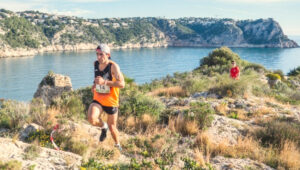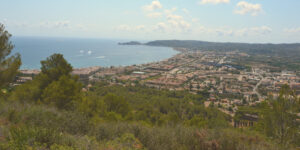7 new infections in Xàbia; 39 in the Marina Alta
The spread of the infection appears to be slowing in the Dénia health authority area with the lowest number of new cases for almost a month.

Xàbia
Xàbia has recorded 7 new infections over the weekend, bringing the total number to 225 since the crisis began. The 14-day cumulative rate (IA) has continued to drop, now standing at 83.32 new infections per 100,000. The death toll remains at 3.
Marina Alta
The Dénia Health Authority, which covers almost all of the Marina Alta region, has recorded 39 new infections since the last update bringing the total to 1,867 positive cases since the crisis began. This represents the lowest rise in new cases since October 22nd.
The 14-day IA rate has dropped to 93.16 new infections per 100,000 inhabitants, the lowest rate in the region since the end of October, and the rate has dropped almost a quarter in 14 days. And it is remains one of the lowest rates in the whole Comunidad Valenciana, only improved on by La Marina Baixa (72.31).
The death toll in the Marina Alta remains at 34 .
The new infections have been recorded in the following municipalities:
- Dénia – 11
- Benissa – 8
- Pedreguer – 8
- Xàbia – 7
- Gata de Gorgos – 2
- Ondara – 2
- Calp – 1
Comunidad Valenciana
After a drop on Monday, the all important 14-day IA rate has climbed back up towards 300, standing at 299.53 new infections per 100,000 inhabitants; the Comunidad Valenciana can no longer claim to have one of the lowest rates on the mainland after the Comunidad de Madrid and Galicia both posted lower rates (297.30 and 288.90 respectively. Indeed, the Comunidad Valenciana is one of just three autonomous communities to have seen their rates rise over the 24 hours before last night’s report.
Today (Friday), in response to the news that the IA-rate in the region has trebled since October, Ximo Puig, president of the Generalitat Valenciana, confirmed that the land borders of the Comunidad Valenciana will remain sealed until midnight on December 9th, after the long ‘puente’ weekend, after which the regional government will decide on the measures to be adopted over the Christmas period. In addition, the towns of Elda and Petrer will remain closed off for another two weeks.
The occupancy of beds in general hospital and ICU wards remains at Level 4 in the Comunidad Valenciana, the maximum level of the national COVID-19 risk assessment system, which means that the general occupation has exceeded 15% of patients admitted with COVID-19, whilst over 30% of ICU beds are occupied by COVID-19 patients, according to data supplied in Nº 254 of the Ministry of Health report.
Across the Comunidad Valenciana, the 14-day IA rate has risen in 17 of the 24 health authorities with Torrevieja seeing a significant rise in new cases since the last update (+33.18%), followed by the Valencia General Hospital (+21.54%) and Alicante General Hospital (+17.01%). At the other end of the scale, the Denia Health Authority has seen the largest drop since the last update (-16.67%) with Gandía close behind (-15.46%).
Spain
The national 14-day IA rate has dropped for the eighth successive report and now stands at 436.27 new infections per 100,000 population, a drop of 17% in the past two weeks. Yesterday, only three of the 19 autonomous regions in Spain recorded a rise in their cumulative rates over the previous 24 hours: Cantabria (+2.59%), Asturias (+0.24%) and the Comunidad Valenciana (+0.11%).
The situation in Asturias would appear to be on particular concern, almost doubling in the past two weeks, and the regional government has extended the perimetral lockdown of Álaves, Gijón and Oviedo whilst also planning to confine several other municipalities which have recorded high infection rates.
At the other end of the scale, Navarra has seen its cumulative rate drop by 59% in the past fortnight, a shade better than the city enclave of Melilla (-58%); in addition, both Cataluña (-43%) and Aragón (-43%) has seen big drops over the past 14 days.
The encouraging data in Cataluña has allowed the regional government to announce that some restrictions will be lifted in the region on Monday, including the re-opening of bars and restaurants, which will be allowed to stay open until 9.30pm, and some cultural activities resumed, such as cinema, theatre and shows. However, social gatherings remain limited to six people and the night-time curfew remains at 10.00pm. If the situation allows, Phase 2 of the region’s deescalation plan will come into effect on December 7th, with Phase 3 expected to begin on December 21st and Phase 4 on January 4th 2021.
However, health experts have agreed that the country must remain cautious and not become too complacent. Guadalupe Fontán, a nurse specializing in healthcare management and planning, said: “Cases have fallen but many regions continue to be under great pressure. Under no circumstances can we relax because the number of cases is falling. We have to be alert, especially with the fall in temperatures that is expected shortly.”
COVID-19 C.Valenciana: Monitorage de la Situació
Ministero de Sanidad: Actualización nº 254 (19/11/2020)
El Pais
Friday 20th November, 11.30am – MGS



